
How to Use ams1117 3.3: Examples, Pinouts, and Specs
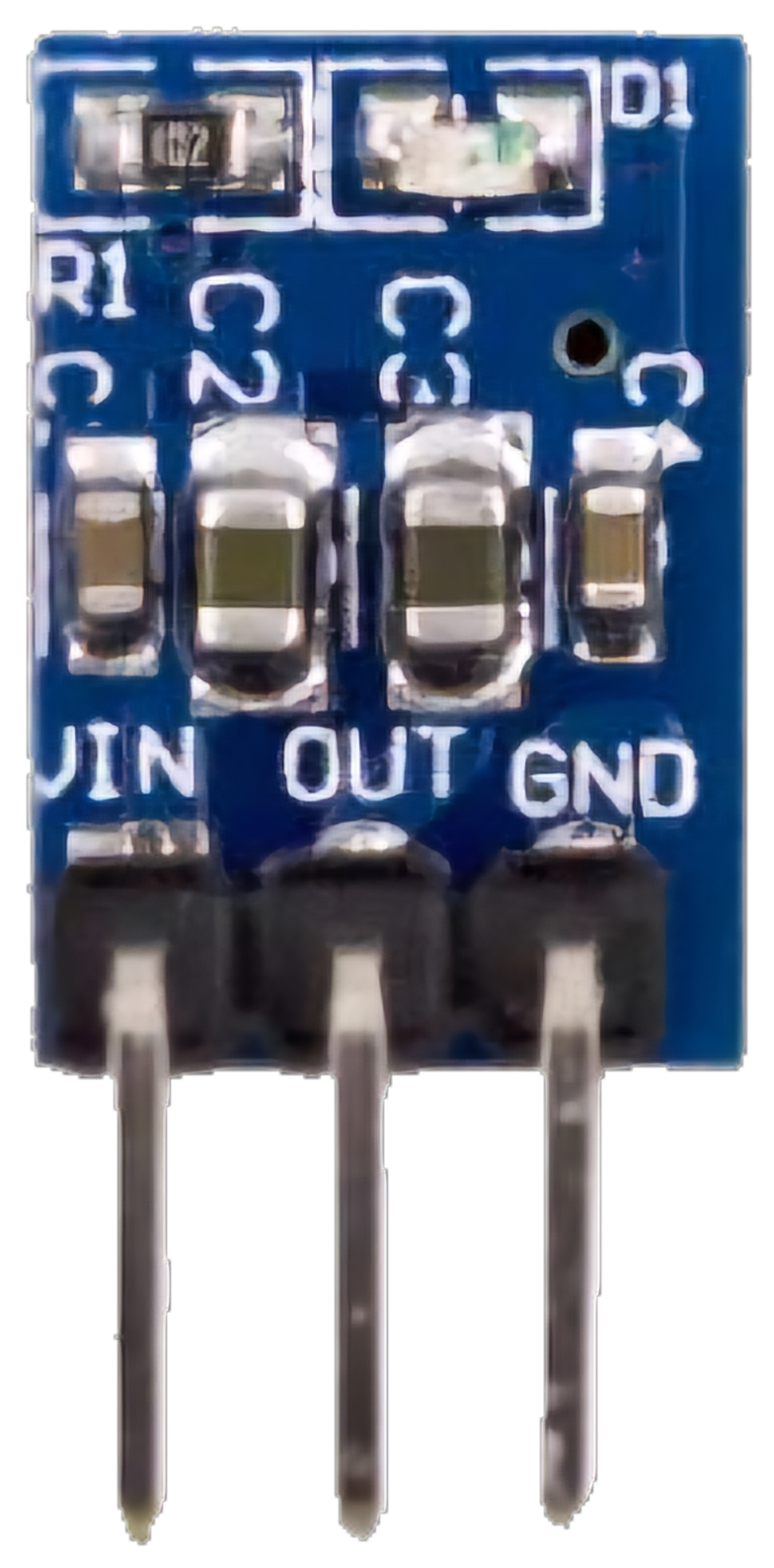
 Design with ams1117 3.3 in Cirkit Designer
Design with ams1117 3.3 in Cirkit DesignerIntroduction
The AMS1117 3.3 is a low dropout (LDO) voltage regulator designed to provide a regulated output of 3.3 volts from a higher voltage input, typically ranging from 4.75V to 12V. This component is widely used in electronic circuits that require a stable 3.3V power supply, such as microcontroller-based systems, including Arduino projects, portable devices, and other digital electronics.
Explore Projects Built with ams1117 3.3
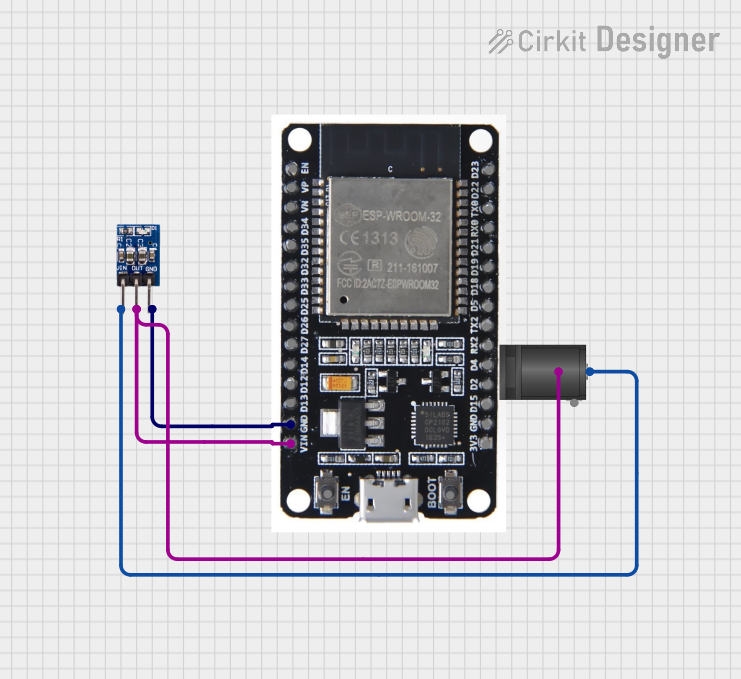
 Open Project in Cirkit Designer
Open Project in Cirkit Designer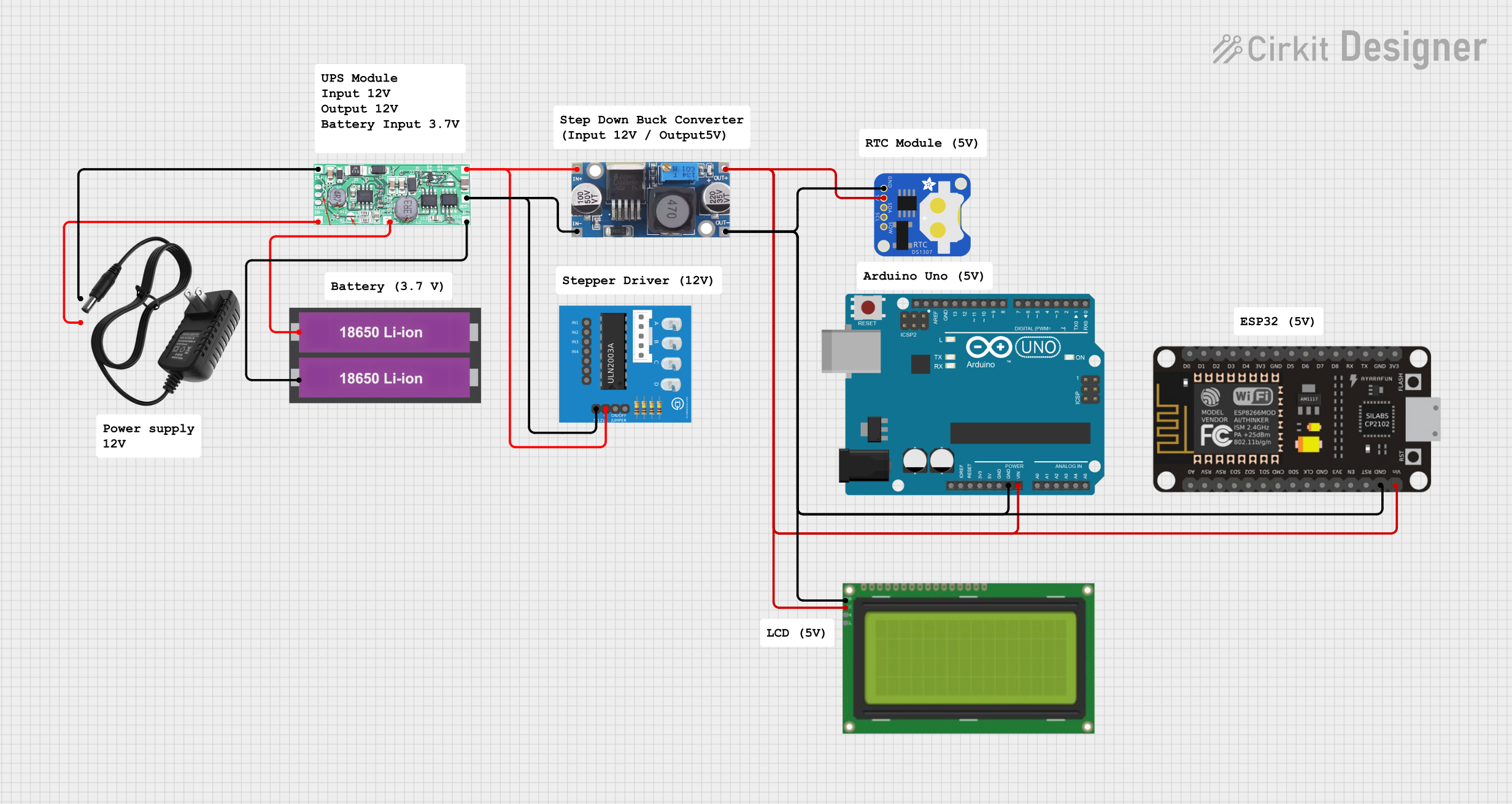
 Open Project in Cirkit Designer
Open Project in Cirkit Designer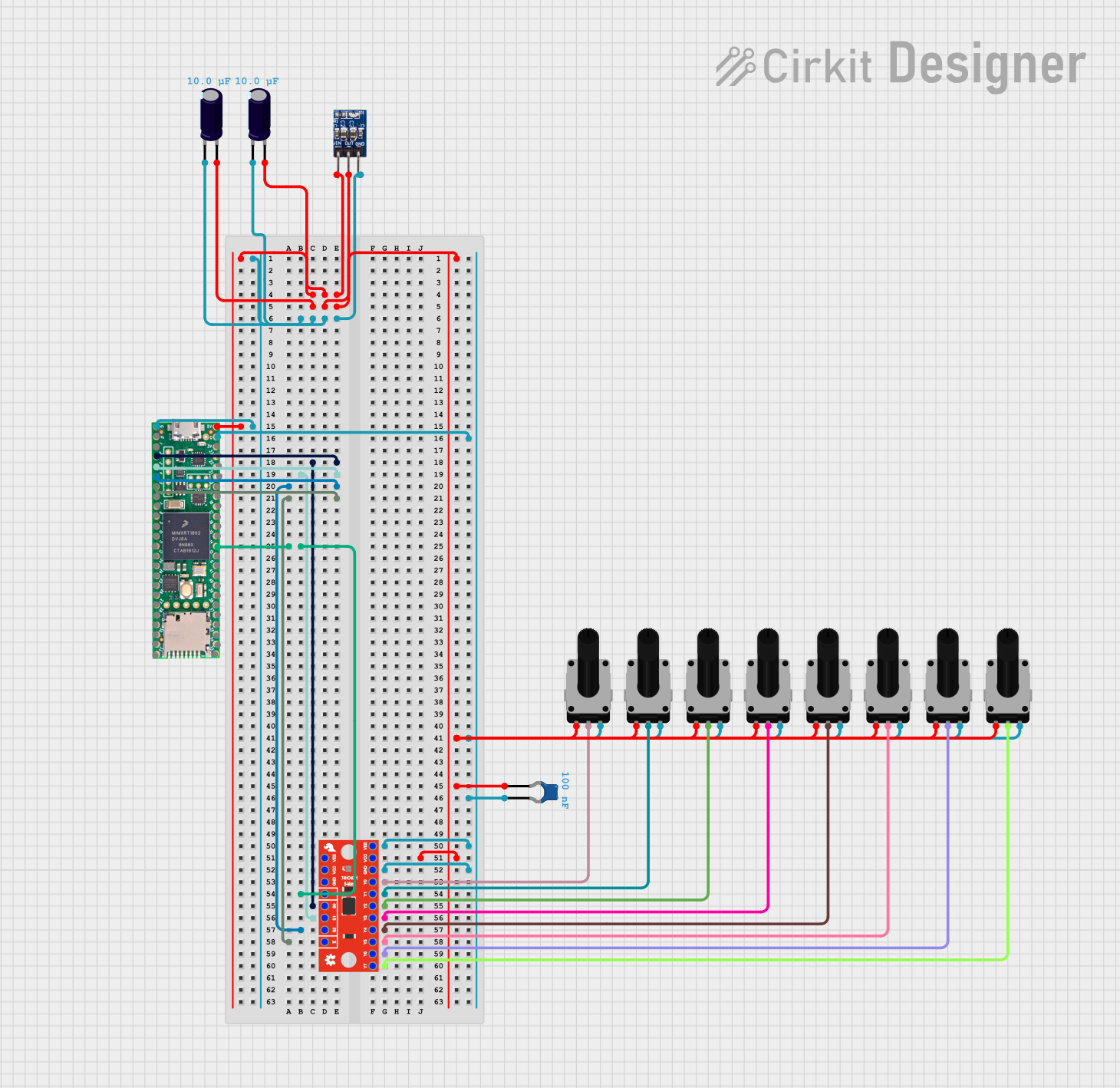
 Open Project in Cirkit Designer
Open Project in Cirkit Designer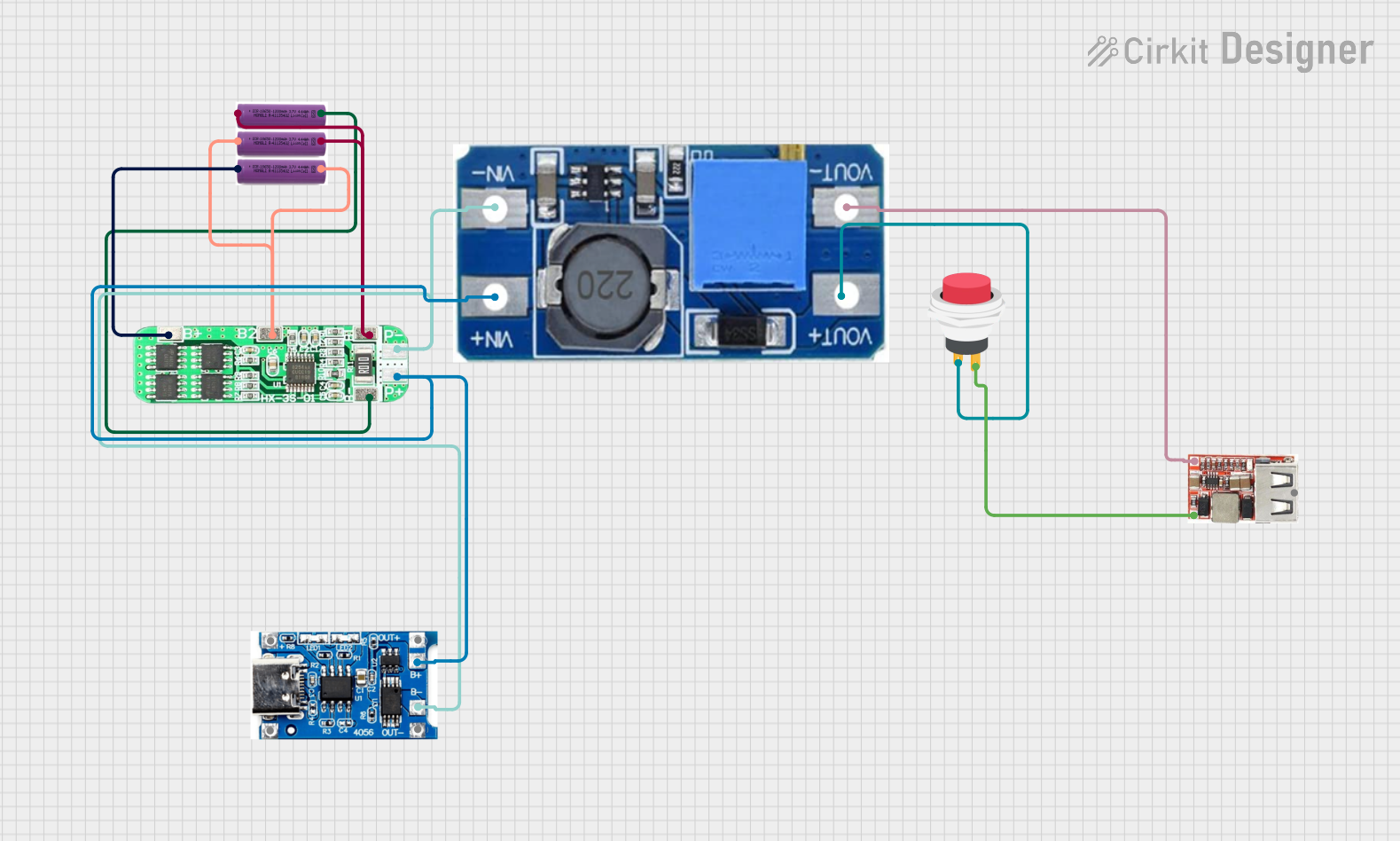
 Open Project in Cirkit Designer
Open Project in Cirkit DesignerExplore Projects Built with ams1117 3.3

 Open Project in Cirkit Designer
Open Project in Cirkit Designer
 Open Project in Cirkit Designer
Open Project in Cirkit Designer
 Open Project in Cirkit Designer
Open Project in Cirkit Designer
 Open Project in Cirkit Designer
Open Project in Cirkit DesignerCommon Applications and Use Cases
- Power supply for 3.3V logic components
- Arduino and other microcontroller boards
- Battery-powered devices
- Portable electronics
- Wireless communication modules
Technical Specifications
Key Technical Details
- Output Voltage: 3.3V
- Maximum Output Current: 800mA
- Dropout Voltage: 1.3V (max at full load)
- Input Voltage Range: 4.75V to 12V
- Quiescent Current: 5mA (typical)
- Package: TO-252 (SMD)
Pin Configuration and Descriptions
| Pin Number | Name | Description |
|---|---|---|
| 1 | VIN | Input voltage (4.75V to 12V) |
| 2 | GND | Ground reference |
| 3 | VOUT | Regulated output voltage (3.3V) |
Usage Instructions
How to Use the AMS1117 3.3 in a Circuit
- Connect the input voltage (4.75V to 12V) to the VIN pin.
- Connect the ground from your power source to the GND pin.
- The VOUT pin will provide the regulated 3.3V output.
- Place a 10µF capacitor (or greater) between VIN and GND close to the regulator to stabilize the input.
- Similarly, place a 10µF capacitor between VOUT and GND to stabilize the output voltage.
Important Considerations and Best Practices
- Ensure that the input voltage is within the specified range to prevent damage.
- Do not exceed the maximum output current of 800mA.
- Always use capacitors for input and output stabilization as recommended.
- Keep the regulator away from high-temperature sources to prevent overheating.
- If the regulator is expected to dissipate significant power, consider using a heatsink.
Troubleshooting and FAQs
Common Issues
- Voltage Drop: If the output voltage is lower than expected, check the input voltage and load current to ensure they are within the specified range.
- Overheating: If the regulator is too hot, reduce the load current, improve ventilation, or attach a heatsink.
- Instability: If the output is unstable, verify the capacitors are correctly placed and are of adequate value.
Solutions and Tips
- Always double-check wiring and connections.
- Use a multimeter to measure input and output voltages.
- Ensure adequate cooling for the regulator when used near its maximum output current.
FAQs
Q: Can I use the AMS1117 3.3 without capacitors? A: It is not recommended to use the AMS1117 3.3 without capacitors as they are required for stability.
Q: What is the maximum input voltage for the AMS1117 3.3? A: The maximum input voltage is 12V. Exceeding this may damage the regulator.
Q: How can I increase the output current capability? A: The AMS1117 3.3 is rated for a maximum of 800mA. To increase current capability, you may need to use a regulator capable of higher output current or parallel multiple AMS1117 regulators with proper current sharing.
Example Code for Arduino UNO
// Example code to read the voltage from the AMS1117 3.3 regulator
const int analogPin = A0; // Connect the VOUT of AMS1117 to A0
const float referenceVoltage = 5.0; // Reference voltage of Arduino UNO
void setup() {
Serial.begin(9600);
}
void loop() {
int sensorValue = analogRead(analogPin);
float voltage = sensorValue * (referenceVoltage / 1023.0);
Serial.print("Regulator Output Voltage: ");
Serial.print(voltage);
Serial.println(" V");
delay(1000);
}
Note: This code assumes that the Arduino UNO's 5V pin is used as the reference voltage and that the AMS1117 3.3's output is connected to the A0 analog input. The code reads the voltage and prints it to the Serial Monitor. Ensure that the Arduino's AREF pin is connected to its 5V output if you are using it as the reference voltage.